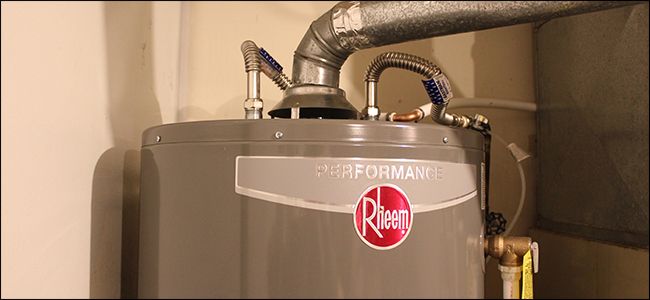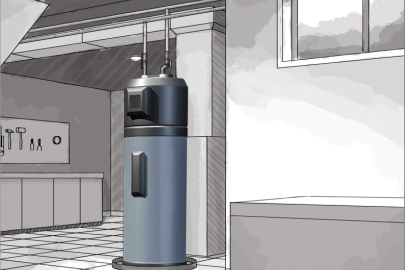Steps to Successfully Care for Your Home's Hot Water System
Steps to Successfully Care for Your Home's Hot Water System
Blog Article
Were you looking for critical info concerning How to Maintain a Hot Water Heater in a Few Simple Steps?

Hot water is important for everyday comfort, whether it's for a refreshing shower or washing recipes. To guarantee your hot water system runs efficiently and lasts much longer, normal maintenance is key. This article gives sensible suggestions and understandings on just how to keep your home's warm water system to prevent disruptions and pricey repair services.
Introduction
Maintaining your home's warm water system may appear complicated, however with a few simple actions, you can guarantee it operates efficiently for years to find. This guide covers every little thing from comprehending your hot water system to DIY upkeep suggestions and understanding when to hire professional aid.
Value of Maintaining Your Warm Water System
Normal maintenance not only expands the life expectancy of your warm water system however also guarantees it operates efficiently. Disregarding maintenance can lead to lowered efficiency, greater energy costs, and even premature failing of the system.
Signs Your Warm Water System Requirements Upkeep
Understanding when your hot water system requires attention can stop major problems. Keep an eye out for indications such as inconsistent water temperature level, strange sounds from the heater, or rustic water.
Understanding Your Warm Water System
Before diving right into maintenance jobs, it's helpful to recognize the basic elements of your hot water system. Normally, this includes the hot water heater itself, pipes, anode rods, and temperature level controls.
Regular Monthly Maintenance Tasks
Routine monthly checks can assist capture minor concerns before they intensify.
Purging the Water Heater
Purging your water heater eliminates debris buildup, enhancing performance and prolonging its life.
Monitoring and Changing Anode Rods
Anode rods protect against deterioration inside the tank. Checking and replacing them when worn out is important.
Checking and Readjusting Temperature Level Setups
Adjusting the temperature settings guarantees ideal efficiency and security.
Do It Yourself Tips for Maintenance
You can do numerous upkeep jobs on your own to maintain your hot water system in leading condition.
Checking for Leaks
Frequently check pipelines and links for leakages, as these can cause water damage and higher bills.
Examining Pressure Relief Valves
Testing the pressure relief valve guarantees it works appropriately and avoids excessive stress buildup.
Shielding Pipelines
Shielding hot water pipelines minimizes heat loss and can save energy.
When to Call a Specialist
While do it yourself maintenance is beneficial, some problems require specialist experience.
Complex Issues Calling For Specialist Help
Instances consist of significant leakages, electric issues, or if your water heater is constantly underperforming.
Regular Professional Maintenance Advantages
Expert upkeep can consist of comprehensive examinations, tune-ups, and making certain compliance with safety and security criteria.
Conclusion
Normal maintenance of your home's hot water system is crucial for efficiency, longevity, and price financial savings. By following these suggestions and knowing when to look for expert assistance, you can ensure a dependable supply of hot water without unforeseen disruptions.
Water Heater Maintenance Tips
Test the TPR Valve
Shut off the power and the cold-water supply valve. Place a bucket under the pipe connected to the temperature-pressure-release (TPR) valve on the top or side of the tank. (This valve opens if the tank pressure gets too high.) Lift the valve’s tab to let some water out, then let go. If water keeps flowing, drain the tank partway, unscrew the old valve with a pipe wrench, and install a new one. Check the Anode Rod
Put a hose to the tank’s drain cock and let out a few gallons of water. Now fit a 1 1/16-inch socket onto the rod’s hex head on top of the heater (or under its top plate) and unscrew the rod. If it’s less than ½ inch thick or coated with calcium, buy a new one, wrap its threads with Teflon tape, put it back in the tank, and tighten securely. Use this segmented rod if headroom above the tank is limited. Drain the Tank and Wash Out Sediment
Drain the remaining water in the tank into the bucket, then stir up the sediment on the tank’s bottom by briefly opening the cold-water supply valve. Drain and repeat until clean water comes out of the hose. Close the drain cock, refill the tank, and turn its power back on. Adjust the Temperature
Find the temperature dial on the side of the tank and unscrew its cover. Adjust the dial to 120 degrees using a flathead screwdriver. For every 10 degrees the temperature is lowered, you can expect to save up to 5 percent in energy costs. Turn the water heater off or the thermostat down to its lowest setting if you plan to be away from home for more than three days. Insulate the Pipes
Buy some self-sticking 3/8-inch-thick foam pipe insulation that matches the pipes’ diameter. Slide the foam over the hot-and cold-water pipes as far as you can reach. Insulating the cold-water pipe prevents condensation in summer. Peel the tape and squeeze the insulation closed. If the pipe is 6 inches or less from the flue, cover it with 1-inch-thick unfaced fiberglass pipe wrap. https://www.thisoldhouse.com/plumbing/21016402/how-to-maintain-a-water-heater

I stumbled upon that page about What Kind of Maintenance Do Water Heaters Need? when perusing the internet. Sharing is caring. Helping people is fun. Kudos for your time. Return soon.
Book Your Appointment Report this page